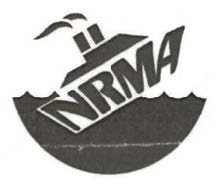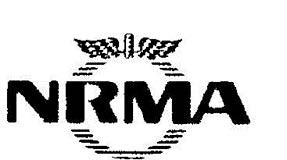The Federal Court of Australia in National Roads and Motorists’ Association Limited v Construction, Forestry, Maritime, Mining and Energy Union [2019] FCA 1491 has handed down an important trade mark decision in the context of a highly publicised industrial dispute.
The National Roads and Motorists Association (NRMA), through its subsidiary My Fast Ferry Business (MFF), operates a high-speed ferry service between Manly and Circular Quay.
Since September 2018, the NRMA and the Maritime Union of Australia (MUA) (a division of the Construction, Forestry, Maritime, Mining and Energy Union (CFMEU)) have been engaged in an industrial dispute in relation to the wages and conditions of MFF’s employees.
The dispute escalated at the NRMA’s Annual General Meeting, when MUA members handed out pamphlets criticising the NRMA. Importantly, these pamphlets featured an image of a sinking ship bearing the name “NRMA”.
 (the Ship Logo).
(the Ship Logo).
The logo was used alongside the tagline “Don’t let wages sink to the bottom of Sydney Harbour”.
In response, the NRMA commenced urgent proceedings out of the Federal Court of Australia, alleging that the CFMEU had (among other things) infringed its registered trade marks (including the below):

The Court found that the Ship Logo was deceptively similar to NRMA’s trade mark.
Both shared the same essential feature, being the acronym “NRMA”. Therefore, there was a real and tangible danger that a person would confuse the two.
Despite this confusion, NRMA’s claim failed, as it could not demonstrate that the MUA used the Ship Logo as a trade mark.
The purpose of a trade mark is to act as a “badge of origin”. A trade mark must indicate a connection, in the course of trade, between goods or services and the person who applies the mark to those goods or services.”1
The Ship Logo was used in the context of industrial action against the NRMA. By using the Ship Logo, the MUA was not trying to indicate a connection between goods or services provided in the course of trade. Rather, the Ship Logo drew attention to the NRMA, being the organisation to which the industrial action was directed.
Accordingly, MUA did not use the Ship Logo as a trade mark; therefore, the NRMA’s trade mark infringement claim failed.
An owner of a registered trade mark is entitled to commence an infringement action, in circumstances where a competitor uses a deceptively similar brand.
However, a plaintiff must also prove that the competitor uses the brand as a trade mark, so as to indicate a connection between the competitor and its good and/or services. This may not always be clear, and it is recommended you seek professional advice before issuing a cease and desist letter (or commencing proceedings).
Further, if you intend to use a competitor’s brand (for example, in comparative advertising), it is important to seek legal advice as to whether such use could constitute use as a trade mark (exposing you to an infringement action).
If you require advice in relation to trade mark use, do not hesitate to contact Iain Freeman or Andrew Sutton.


[1] National Roads and Motorists’ Association Limited v Construction, Forestry, Maritime, Mining and Energy Union [2019] FCA 1491, [114].